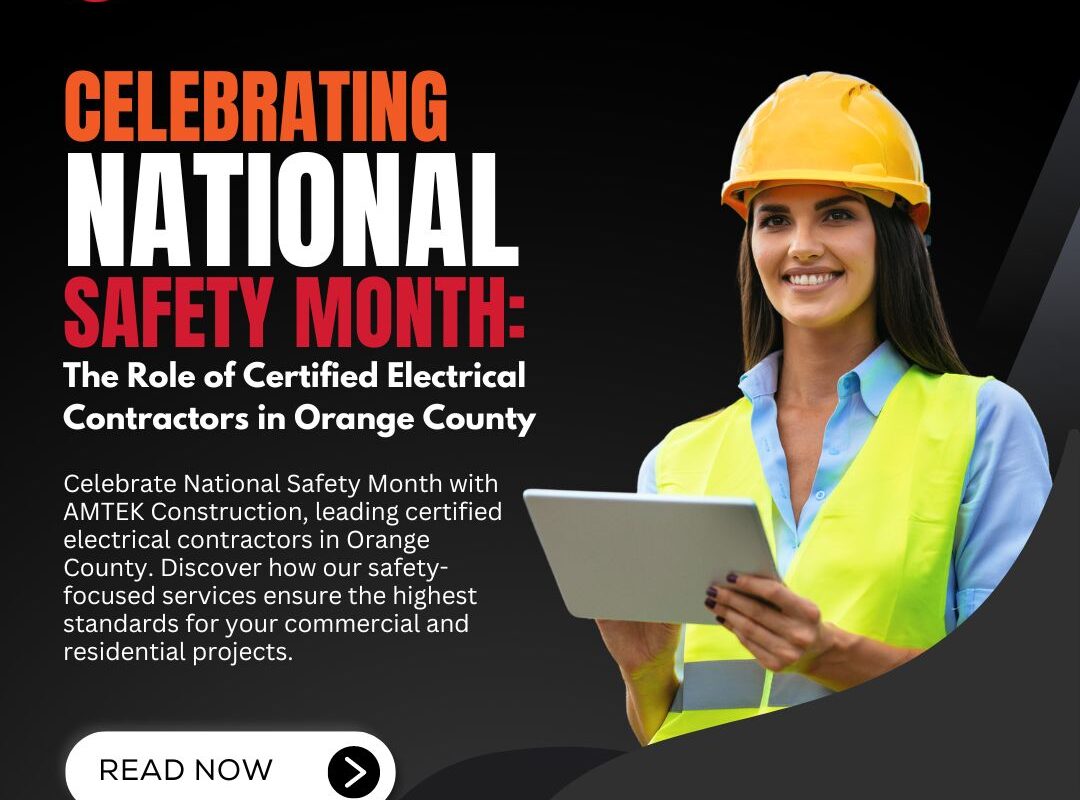As the temperatures rise during the summer months in Los Angeles, so does the demand for energy, especially in commercial buildings where cooling and lighting costs can skyrocket. Efficient management and reduction of energy consumption during these peak times are crucial for maintaining cost-effectiveness and sustainability. AMTEK Construction, a leading electrical contractor in Los Angeles, provides expert services to help commercial properties optimize their energy usage through advanced HVAC and lighting systems.
Effective Strategies for Energy Management
1. HVAC System Optimization:
– Regular Maintenance: Before the summer heat hits, ensure that your HVAC systems are serviced. AMTEK Construction offers comprehensive maintenance checks that include cleaning air filters, checking fluid levels, and ensuring that all components are functioning efficiently.
– Upgrade to Energy-Efficient Units: Older HVAC systems can be energy hogs. Upgrading to energy-efficient models can reduce energy consumption significantly. AMTEK’s team can assess your current system and recommend high-efficiency models that fit your building’s needs.
– Smart Thermostats: Installing smart thermostats allows for better control of HVAC operations. These devices can adjust temperatures based on the time of day or room occupancy, reducing unnecessary cooling costs. AMTEK Construction specializes in smart system installations that integrate seamlessly with existing setups.
2. Lighting System Enhancements:
– LED Upgrades: Switching to LED lighting from traditional incandescent or fluorescent lights can cut down your energy use drastically. AMTEK Construction can retrofit your property with LED solutions that provide better light quality and are incredibly energy-efficient.
– Automated Lighting Controls: Consider implementing motion sensors, dimmers, and automated timers to control lighting usage. AMTEK can install these systems to ensure that lights are used only when needed, further reducing energy costs.
3. Energy Audits:
– Conducting Energy Audits: AMTEK Construction can perform detailed energy audits to identify areas where energy is being wasted. These audits can uncover not just HVAC and lighting inefficiencies but also other areas like insulation and window seals that could be improved to conserve energy.
4. Window Treatments and Tinting:
– Improving Insulation: Window treatments or tinting can block excessive heat from the sun, significantly reducing the load on your HVAC system. AMTEK provides consultations on the best options tailored to your property’s orientation and architectural design.
The Role of Electrical Contractors
Electrical contractors in Los Angeles play a pivotal role in implementing these energy-saving measures. With specialized knowledge in both electrical systems and energy efficiency technologies, contractors like AMTEK Construction are vital partners in preparing your commercial property for peak summer usage. They not only handle installations and upgrades but also provide valuable insights into the most cost-effective strategies to manage energy consumption.
Why Choose AMTEK Construction
With years of experience and a deep commitment to sustainability and efficiency, AMTEK Construction is your go-to electrical contractor in Los Angeles for preparing for the summer months. Their expertise ensures that your commercial property is optimized for energy efficiency, reducing operational costs and enhancing the overall environmental footprint.
Conclusion
As summer approaches, taking proactive steps to manage energy consumption in commercial buildings is more important than ever. With the help of AMTEK Construction, businesses in Los Angeles can implement effective strategies to ensure their properties are well-prepared for the peak energy usage that comes with the season. Optimize your HVAC and lighting systems today and turn the challenge of summer energy costs into an opportunity for savings and sustainability.





